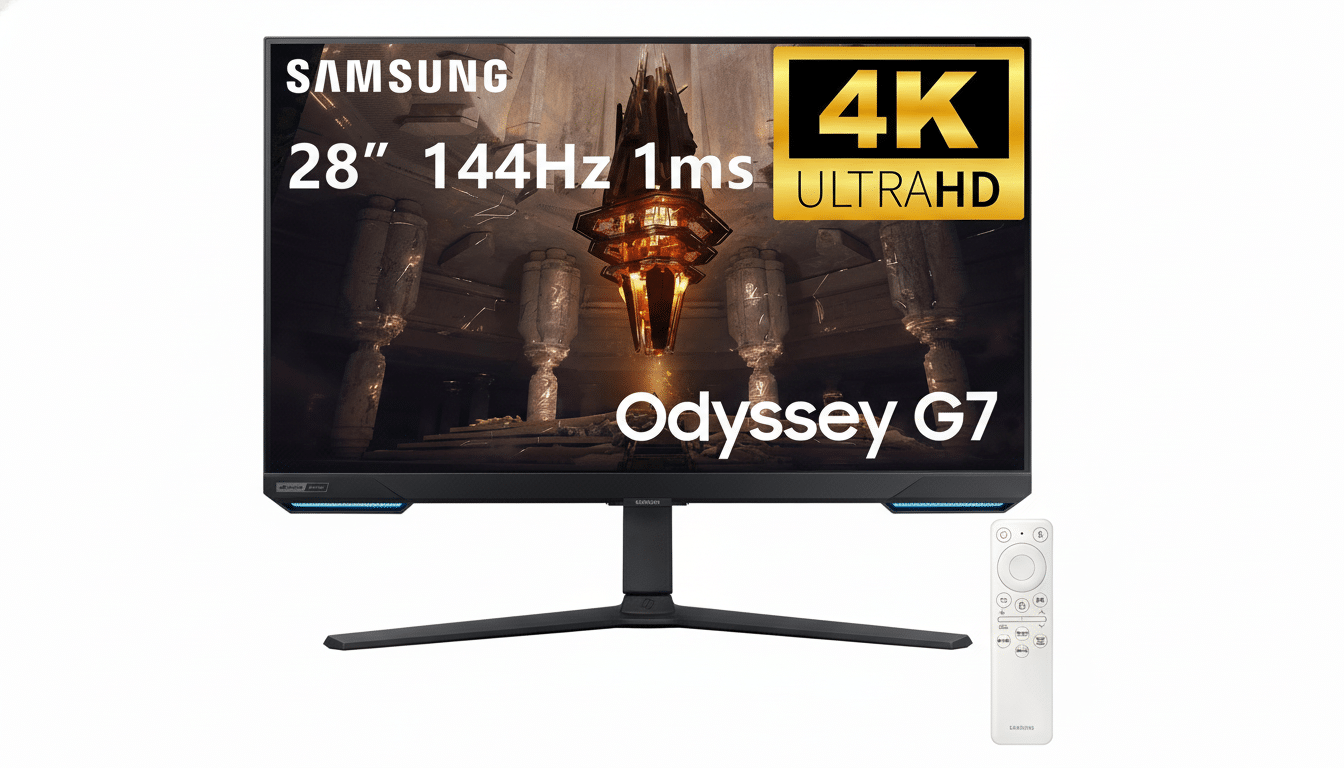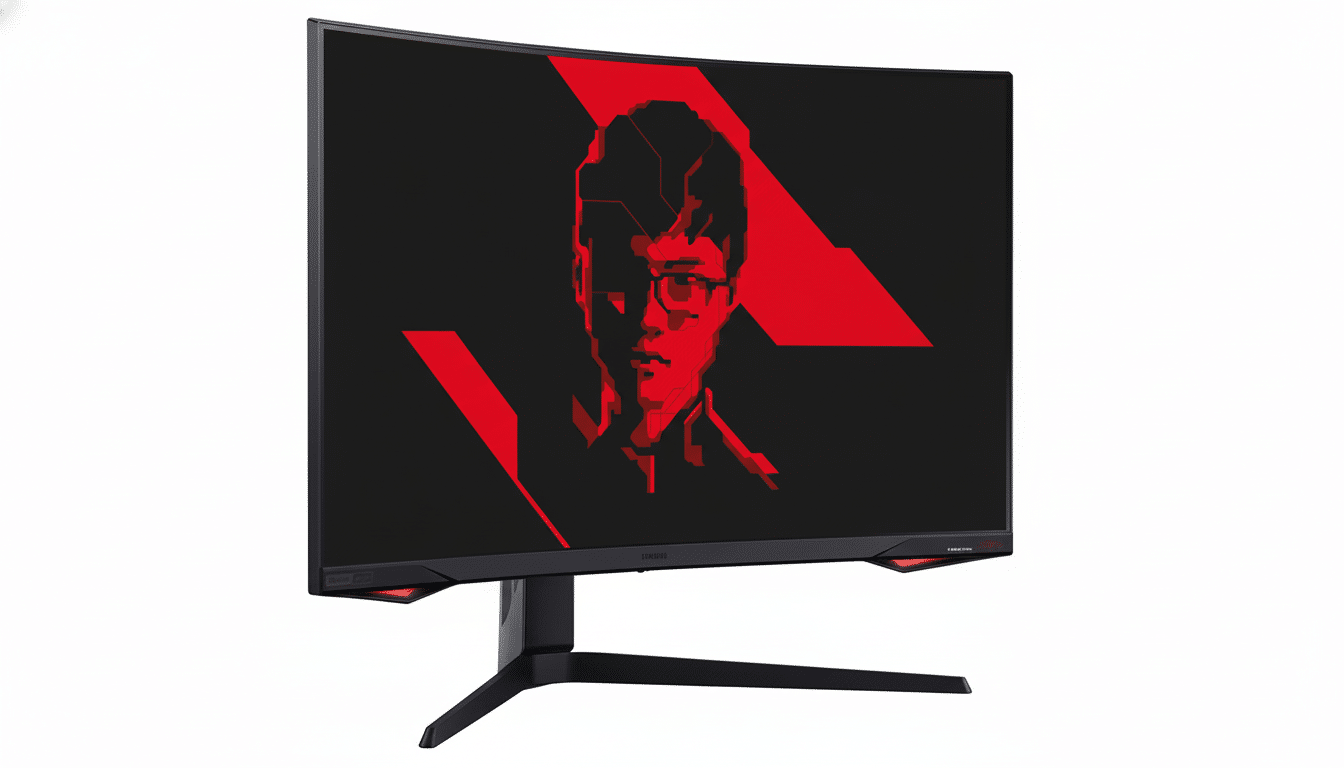The 40-inch-class version of the Samsung Odyssey G7 just dropped to $899.99 on Amazon, a $300 reduction from its MSRP of $1,199.99. At 25% off, this is one of the better big-screen gaming monitor deals currently available — especially for players craving some immersion without graduating to an ultra-wide or super ultra-wide footprint.
The magic of this discount is on two fronts: You get flagship-level gaming speed and a truly panoramic feel at a price traditionally occupied by smaller panels. If you’ve been biding your time and holding off on new gear purchases before the next set of blockbuster releases, this is a solid bet.

Why this matters for Samsung Odyssey G7 buyers
That’s the bottom line for the Odyssey G7: a high-refresh, low-latency curved display that wraps around your field of view. It’s designed with a rated 180Hz refresh rate and 1ms gray-to-gray response, so even fast-moving images are kept crisp, with minimal blur and ghosting in twitchy shooters and racers. That’s a pairing that remains fairly unusual in the 40-inch-size class; most panels at this size come with a ceiling closer to 120-144Hz.
The curved design is fully curved along the lines of the widest, most immersive displays on the market now — and offers an improvement over the “stretched edges” you can get with flat extra-wide monitors, which some see as a distraction. And this super ultra-wide is an ideal middle ground for gamers who find a 49-inch display unfathomable but want just a bit more screen real estate than a 27- to 34-incher can offer.
Quality-of-life features matter, too. Picture-in-picture lets you maintain a guide, stream, or chat window while playing, and the adjustable stand makes sure your ergonomics are on point. Support for variable refresh rate, meanwhile, enables smoother play with both PC GPUs and modern consoles that output high-frame-rate signals.
Performance thoughts beyond the headline specs
Target a high refresh rate and you’ll enjoy the competitive benefit of being able to out-react your opponents. NVIDIA’s “Frames Win Games” study has found that there’s a noticeable advance in accuracy and tracking quality as refresh rate and fps increase, especially beyond 120Hz. On a biggish screen like the G7, that extra headroom cuts down perceived input lag and enhances motion definition, which you’ll be able to observe in camera pans and fine-target flicks.
And the G7 line is certainly no stranger to native contrast, as its VA-style panels produce strong native contrast that allows for deep blacks without crushing shouty highlights. And that’s welcome news for atmospheric games where seeing or being seen is the difference between life and death. Rtings, among others, were quick to point out the fast response times and deep blacks on the G7 models, so this 40-inch model seems to follow suit in its performance ethos.
HDR support on gaming monitors is all over the place, but Samsung tunes it toward respectable peak brightness and wide color, so neon-lit cityscapes and particle-heavy effects really pop.
Specific certification varies by model, but the takeaway for you is improved punch and color volume vs. budget panels of this size.

How It Compares With Other Similar Monitors at This Price
At $899.99, the Odyssey G7 clocks in a little lower than several premium 38-to-42-inch gaming displays with matching or slower refresh rates. OLED options like the QD‑OLED bandwagon serve up endless blacks and transfixing contrast, but they usually present in more manageable 34-inch forms at this end of the market, and you’ll need to be a bit more circumspect with their static HUD elements. If you need a bigger canvas for single-player epics, strategy, and productivity without the cons of maintenance trade-offs, then the G7’s proposition is simple.
It’s a trade: compared to most popular 27-32-inch 240Hz esports panels, you are trading absolute top-end refresh for immersion and reach. (Image credit: Future) Meanwhile, for most games running demanding AAA experiences where frame rates fluctuate between 100-160 fps, a 180Hz ceiling combined with low response times is a more fitting compromise — especially on a big, curved screen that makes cinemascope worlds feel inherently cinematic.
Who will get the most out of the Odyssey G7
If your library traverses competitive shooters, open-world RPGs and racing sims, the size and speed of the Odyssey G7 check a rare combination of boxes. Sim cockpit and racing fans receive a wider horizon line; RPGers secure denser HUD/menu legibility; and multiplayer regulars rapidly notice the high refresh/pixel response gains.
It’s also a top pick for hybrids. The screen space and PiP mode are perfect for weekday multitasking, so you can focus on one monitor when it’s time to play in full screen. If a 49-inch super ultra-wide is out of the question, this curve-driven 40-incher hits the sweet spot.
Before you click: what to check before you buy
As with any monitor buy, double-check return windows and pixel policies — and, of course, find out if your cable will even support a high refresh rate (DisplayPort for your PC is usually the safest bet) and that your GPU can push it to meet high frame rates.
Gaming display pricing ebbs and flows around major retail events; as industry trackers like IDC have shown, the gaming monitor category has experienced stable growth, with lots of promotional activity as manufacturers chase after one another in the 144Hz-plus segment, so a $300 discount on a brand-name 40-inch model is noteworthy.
Bottom line: Whether you’re waiting for a large, curved gaming monitor to advance your hardware with, or just want an excuse to upgrade already, this Odyssey G7 deal hits the sweet spot in terms of size, speed, and price. It’s not just larger — it’s designed to make your games flashier and faster.

